Android Phone Fans |
- Could Lenovo buy RIM?
- Reminder: starting Saturday, unlocking your phone will become illegal
- Samsung rakes in the dough with $52 billion in revenue, $8.27 billion in profit for Q4
- HTCRuu.com shut down at request of HTC, ROM files also in danger
- Introducing the Yolo phone by Intel
- Skype for Android update brings portrait calling to tablets
- Huawei Ascend P2 press shot leaks, looks quite thin
- OUYA controller refined ahead of production
- Bipper launches MobileKids app, lets parents keep tabs on kids’ phone usage
- Stephen Elop: Google backing away from Android’s open ecosystem
- Project Watch: Will Google spark a smart watch revolution?
- Samsung Galaxy Note 8 spotted in the wild
- Temple Run 2 now available from Google Play
- Android Overload: HTC One X receives Jelly Bean on Telus, Lookout Lock Cam snaps pics of unsuspecting thieves, and more
- FCC filings show Google could be working with Clearwire on an experimental LTE network
| Posted: 24 Jan 2013 07:29 PM PST With Research in Motion failing to innovate and sustain in a growing smartphone market, the Canadian manufacturer is finding it tough to survive. Blackberry isn’t quite dead, but with Android, iOS and Windows Phone capturing the interests of those looking to buy smartphones more than any other operating system it’s clear that a comeback will be as hard to muster up as year-old peanut brittle. Recent rumors suggest RIM is looking into several options to gain some relevancy, including selling off its hardware business and becoming an OS vendor for other OEMs to license from. Another option seems to be on the table — just sell everything, dammit. Bloomberg reports that Lenovo, the Chinese OEM with a very strong foothold in the personal computing market, could be looking to flat-out purchase RIM in a bid that would shake the market up considerably. Lenovo would stand to gain the resources it needs to attempt to become a global provider in the mobile sector, but it’s unclear how, exactly, they would use RIM to reach that goal. I could definitely see Lenovo keeping the RIM boat afloat as the company tries to change its luck with Blackberry 10. Perhaps Lenovo just wants the Blackberry software in order to differentiate itself from the market — after all, when the billion dollar madmen at Samsung have a vice grip on the market using the same operating system you are trying to leverage, it’s tough to stand out. CFO Wong Wai Ming said Lenovo would “have no hesitation if the right opportunity comes along that could benefit us and shareholders.” In other words, if RIM is willing to sell and is happy with the amount of 0′s Lenovo’s willing to stuff onto a check, we could see the next major acquisition take place sometime in the near or distant future. Of course, Lenovo likely isn’t the only one having conversations with RIM, and it’s hard to imagine that an even bigger player isn’t lurking around the corner waiting to one-up any offer they’re willing to put on the table. Should Blackberry OS fail to gain momentum starting this year then I’d say there’s a very good chance that these talks will commence sooner rather than later. |
| Reminder: starting Saturday, unlocking your phone will become illegal Posted: 24 Jan 2013 06:08 PM PST Here’s some good ol’ doom and gloom news for you folks. Starting this Saturday, January 26th, 2013, it will become illegal for users to unlock their mobile phones for use on carriers other than who it was originally intended for. That means buying a Samsung Galaxy S3 on AT&T and performing a carrier unlock on it to use on T-Mobile will technically be breaking the law. I should clear one very important thing up — the process of unlocking your phone refers to the act in which you apply a code or a software process to allow your phone to run on like-minded networks. This does not prohibit us from doing things like rooting our Android phones and unlocking our bootloaders. This doesn’t mean we’re nearing the death of unlocked phones, of course. Carriers can still unlock or grant users permission to unlock mobile phones, users can still buy phones which come unlocked out of the box, and if all else fails — well, chances are there won’t be task forces of active police and military bodies looking to enforce these things like they would drugs and weapons. Despite all that, though, we’re still just as bummed about this news as we were when the additions were first added to the DMCA. Users feel their independence from the control of their wireless carriers slipping away from them in many forms, and being told that you could be prosecuted or sued for unlocking your own phone is about as extreme as it’s going to get. |
| Samsung rakes in the dough with $52 billion in revenue, $8.27 billion in profit for Q4 Posted: 24 Jan 2013 05:05 PM PST Some of Samsung’s biggest competitors might be having a tough time turning a meaningful profit, but the South Korean technology giant should have no qualms with how its fourth quarter went. Samsung reported financials for the final period of 2012, and it revealed that over $52 billion in revenue rolled in from its various businesses. That was enough to give the OEM a healthy profit of $8.27 billion on the quarter, and $27 billion for the entirety of 2012. Samsung has its hands dipped in a lot of different areas — including mobile, appliances, televisions, telecommunications and infrastructure, chipsets, displays, computers and more — so we didn’t expect much less. Regardless of how many different markets Samsung plays in, though, it’s still an impressive feat. Mobile did continue to give Samsung a boost as it saw a 4% increase quarter-over-quarter, and the OEM name-dropped heavy hitters such as the Samsung Galaxy S3 and Samsung Galaxy Note 2 in its obligatory bragging rights ceremony. Despite such an awesome performance, however, Samsung was quick to remind people that it probably won’t do nearly in Q1’2013 as it did last quarter. This is typical for any company, really — Q1 is a dry period for any business following the holiday season, and Samsung is no different. Samsung also says it will likely struggle a bit as it looks to adapt to the fast changing transition in traditional computing, with desktop and laptop PC sales down in favor of mobile and tablets. Still, no one is better positioned to take advantage of that shift than Samsung. As the top mobile OEM in the world and the most successful Android phone manufacturer the industry has seen, Samsung is sitting right where it needs to be to take advantage of this change in the paradigm of contemporary computing. |
| HTCRuu.com shut down at request of HTC, ROM files also in danger Posted: 24 Jan 2013 04:20 PM PST Some rather interesting news has come through the wire courtesy of the owner of HTCRuu.com. According to them, HTC contacted the owner in order to seize the domain and to remove all copyrighted HTC logos on it. The reasoning was simple — HTC felt users would get confused and mistake the website for a legitimate HTC site. Odd, that, considering HTC allows other domains containing its initials to live. The deeper issue seems to have been the the actual distribution of RUUs, or so says the lawyer who is overseeing this matter. Even with the RUUs now being hosted on AndroidFiles.org, HTC is seeking to block the distribution of the files as they are said to be copyrighted works of HTC’s, and that they provide functionality which could potentially harm an unsuspecting user’s device. Their claims aren’t all that outlandish — that’s why we always tell you that you’re responsible for everything you do on your phone when you start messing around with files HTC intends to keep away from us. All of this is within HTC’s right — we can’t fault the OEM for any of this. We’re just left wondering why HTC is suddenly taking such a cautious approach to an area they’ve always been so open about. HTC was one of the first manufacturers to create tools specifically for unlocking the bootloaders on its phones, and the company generally steer cleared of any community efforts surrounding its devices. Their stance dates back to the old WinMo days, so to see them get defensive about the RUUs all of a sudden is quite odd. We’re sure the distribution of these files won’t die forever. The development community has a charming way of being able to bounce back from anything and knocking down any brick wall in its way. It’s unclear whether this particular episode was more about the HTC name and imagery than a desire to block after-market development. We would hope the former is the case, but HTC’s threats against the hosting of its files on AndroidFiles.org has us in doubt. We’ll be looking to get a statement from HTC regarding their motives and actions, so be on the lookout for updates as we’ll provide them as soon as we hear anything. You can read the full email chain over at Reddit. [via AndroidForums.com] |
| Introducing the Yolo phone by Intel Posted: 24 Jan 2013 03:28 PM PST The folks at Intel have introduced a new smartphone for the African market. The name is sure to capture anyone who follows hip-hop almost immediately — it’s the Yolo! No, they didn’t name the smartphone after the acronym which stands for “you only live once,” one which should be abolished as quickly as bell bottoms were. Instead, Yolo is a slight deviation from “Xolo,” the name of Intel’s first smartphone released in 2012, and it seems to be a very decent option for those living in an area that is quite receptive to what we’d call cheap smartphones. The Intel Yolo features a 3.5 inch 320×420 display and a 1.2Ghz processor. We wouldn’t exactly call it smashing, but hey — YOLO. Kenya is the primary market for the device, and residents of the area will be asked to shell out 10,999 shillings — or $125 — for the privilege of walking away from Safaricom with one. The phone doesn’t look terribly bad in design, but you might have guessed that it doesn’t feature the world’s most riveting profile. On the plus side, there does seem to be a modern version of Android running without any customization mucking things up, though expect a few pre-installed apps which should actually do quite well to enhance the experience. Intel’s not touting this thing as its crown jewel or treating this as a shining moment in the history of mobile tech, of course, but its efforts to spread the love to developing nations are highly appreciated. Read on for full press details.
[image via Techweez] |
| Skype for Android update brings portrait calling to tablets Posted: 24 Jan 2013 02:34 PM PST When Skype finally created a dedicated tablet interface for Android slates you couldn’t contain our excitement, but one annoying limitation was the inability to use the app in portrait mode. While landscape mode is fine for those with 10 inch tablets where you’re expected to use it in that orientation most of the time, those with 7 inch tablets loathed having to hold a book-like device sideways. Well, today’s update to the application should clear all that up as the changelog for Skype says portrait mode calling is now available. Unfortunately portrait mode hasn’t been enabled for the entire app, but this is a good first step nonetheless. The biggest annoyance for most people with tablets such as the Nexus 7 was the portrait-oriented placement of the front-facing camera, so if there was one area Skype had to focus on right away we’re glad that was it. New languages have been added to the app, as well, so those speaking Portuguese, Norwegian, and English with a UK-like dialect can feel right at home. Other performance improvements and bug fixes have been made, but you can probably guess that we won’t know the extent of those. Hit the Google Play Store for the upgrade, and keep your fingers crossed that those of us who use Skype mainly for its chat features will get some portrait mode love before too long. |
| Huawei Ascend P2 press shot leaks, looks quite thin Posted: 24 Jan 2013 01:51 PM PST We’ve been hearing a lot about the Huawei Ascend P2 lately, but it’s been tough to procure a shot of the device. We’ve been hearing that this is supposed to be the world’s thinnest device, but considering how often that title changes hands these days we aren’t sure if that claim has been outdated since Alcatel assumed control of it with the One Touch Idol Ultra. Well, a new press shot has finally leaked ahead of its Mobile World Congress unveiling, and if it’s anything to go by then we’d say Huawei has a good shot of besting Alcatel’s aforementioned flagship. We don’t get an exact measurement to go along with this leak, but this thing is sleek enough to forget that it’s sitting inside a pair of skinny jeans. Beauty is mostly skin deep in the mobile world, though, so let’s take a look at what specs we’re supposed to be getting. Rumored are a 4.5 inch IPS display with 1080p HD resolution, a 1.8GHz quad-core processor that’s likely made in-house, 2GB of RAM, 8GB of internal storage, a 13 megapixel camera on the back with a 1.3 megapixel shooter on the front, a 3,000mAh battery, Android 4.1 and more. We’ll be expecting Huawei to create a considerable amount of noise about this flagship follow-up to the original Ascend P1, but the company hasn’t been rumored to be bringing anything else to the show. This is a big sign that Huawei is ready to take another step forward in becoming a premium device OEM, but until the company can roll these handsets out on a global scale they’ll have a tough time trying to become the next big name in mobile. Stick with us through the end of February as we expect to get our greasy palms on the beaut you see above. [via Unwired View] |
| OUYA controller refined ahead of production Posted: 24 Jan 2013 12:44 PM PST When something is listed as a prototype and a company gives a disclaimer that it might change before launch, you’d better take heed to that warning. The folks at OUYA hit us with a nice surprise showing us some tweaks it’s made to the Android console’s controller. The changes they have made are sure to excite everyone who is looking forward to this thing so let’s dive right in and see what’s different. For starters, the all-important directional pad has been changed from the problematic disc-based design to a cross-based design. This change is especially important for those anticipating playing time on a fighting game. OUYA exclaims that accuracy and precision are back, and from someone who knows how horrible this design is for certain genres I can tell you that it’s a very welcome change. Other changes to the controller include a more comfortable analog stick experience with rubberized caps, a touchpad that’s a lot more responsive than it currently is (you can change the sensitivity settings to fit your needs), improved ergonomics for the triggers with a more flush design and a tweaked battery bay for a more snug fit. The folks at OUYA know how important the controller is to the gaming experience, so they let us in on a little bit of a secret — they gave their lead engineer an oscilloscope to test input latency to make sure the controller’s signals get to the console in as little time as possible. Each change is small, but in the end it should all add up to create one blissful experience that a lot of wireless gaming controllers simply don’t provide. OUYA’s always listening to the people, so if there’s something you don’t like or think should be changed don’t be shy about letting them know — as you see with today’s updates, your voice does matter. |
| Bipper launches MobileKids app, lets parents keep tabs on kids’ phone usage Posted: 24 Jan 2013 11:09 AM PST
Bipper has launched a new app for Android and iPhone called MobileKids designed to allow parents to monitor their childrens’ phone usage and provide parental controls. The app is similar to other offerings in terms of controlling what apps and services children can access. The main difference is the ability to alter those controls remotely in real time without compromising privacy. The app is installed on both the parent’s phone and the child’s, and keeps parents updated on newly downloaded apps, new contacts, and more. The child can view the specific restrictions that are applied. We guess the idea is to let kids feel like they still have their freedom while parents get to feel secure with their kids phone usage. While it’s questionable at what age a child should receive their first mobile, MobileKids should help ease concerned parents’ woes. Check out the full press release below.
|
| Stephen Elop: Google backing away from Android’s open ecosystem Posted: 24 Jan 2013 09:27 AM PST
If Nokia CEO Stephen Elop raised hope a few weeks ago that we might someday see a Nokia phone powered by Android, he has thrown water (or perhaps peed) on those flames with his most recent statements. While presenting Nokia”s Q4 2012 earnings, he offered a condemnation of Android, expressing concern that Google is attempting to close its open ecosystem. Elop said that one problem with Android, fragmentation, is “offset by Google’s efforts to turn an open ecosystem into that’s quite a bit more closed.” He notes that this is a recent trend, which may refer to anything from Google dropping Exchange ActiveSync support, effectively gimping Gmail support on Windows Phone devices. Google has also failed to provide their suite of mobile apps for the platform powering Nokia’s smartphones. But his statements could also refer to an expanded Nexus program, the buyout of Motorola, and rumored plans of a flagship Android handset taking advantage of that acquisition. The concern there is that Google will reposition itself as not only a software provider, but a device manufacturer directly competing with the likes of Samsung and other Android partners. Needless to say, whether you agree with Mr. Elop’s opinion or not, it doesn’t sound like he has any immediate plans to support the work that Google is doing. That Nokia Android might still be the pipe dream of smartphone users everywhere. [via The Verge] |
| Project Watch: Will Google spark a smart watch revolution? Posted: 24 Jan 2013 08:28 AM PST According to a report from Business Insider, Google might follow their venture into Android-powered eyewear with another piece of wearable computing: a smart watch. Sources close to the matter say the idea is only being explored in terms of how marketable such a piece of gear might be, with an actual product existing only in the conceptual phases. The question, then, is twofold: a) is the smart watch a viable piece of technology, and b) what can Google do differently from previous manufacturers to better their odds at success? Luckily, we have quite a few examples to draw from when looking at smart watches as a product class, from a few half-baked ideas to the Kickstarter-funded Pebble.
The Pebble might be considered the most successful smart watch yet, and that’s a major credit to the device considering that the project, which raised over $10 million in funding, is only now shipping to early supporters. On paper it has everything consumers could want from an advanced watch: sleek design, customizable watch faces, app integration. It can track your fitness activities or play back music, sync with your phone and provide notifications, or display text messages. Like any good technology, the design builds on its predecessors, more fully realizing the concept. It takes the fitness tracking abilities of the MotoACTV and combines them with the sort of app integration and customization we saw with the Sony LiveView (and later improved with Sony’s SmartWatch). The idea can even be tracked all the way back to less “smart” wrist computers including an LG concept that never surfaced and Casio’s classic calculator watches. The idea of the “James Bond” watch dates back decades, but we finally have the necessary components and robust mobile operating systems to pull it off. Apple is rumored to be developing a smart watch, a no brainer after a whole class of accessories sprouted up in order to turn the iPod nano into a wrist-mounted computer, and now it looks like Google could follow suit. So what might we expect from Google? We need look no further than a patent filed by the tech giant detailing just that. Google’s concept utilizes a flip-up display with two screens. In the closed position the device might act more or less as a basic watch, providing the time and possibly notifications. Opening the watch would open a full range of capabilities. Android is a no-brainer to run the show.
But as with smartphones, Google’s concept has a chance at success not solely because of hardware. It’s Google’s wide range of services that would empower the watch, bringing Google Now functionality and location services to your wrist, easily accessible and integrated into your life. Like Project Glass, the idea would be that the user almost forgets they are wearing a computer. As a parting note, check out this Google Time mockup developed independently by Adrian Maciburko. The design is far from what Google envisions in its patent but provides an idea of what a simple, watch-tailored Android interface could look like. Maciburko even provides a few ideas on how the user would interact with the device.
Will Google ever develop the smart watch to rule all smart watches? We would never put it past them. If they do, they would be wise to look to the previous successes and failures (as well as take a few notes from Maciburko’s design). The foundation for the smart watch revolution has already been laid. [Thanks, Rinkesh, for initially tipping us off to this report!]
|
| Samsung Galaxy Note 8 spotted in the wild Posted: 24 Jan 2013 06:19 AM PST
The first (quasi-blurry) images of what is claimed to be the Samsung Galaxy Note 8.0 have surfaced, showing a design that more or less jives with a previously leaked render of the device. That design reminds us more of an over-sized smartphone than an 8-inch tablet, and borrows from the stylings of the Galaxy S3 and Galaxy Note 2. The placement of a speaker in the normal earpiece position, a physical home button with captive navigation keys, and a portray orientation are all features more typical to a smartphone, which has us wondering if Samsung has taken the phablet craze one step too far. It seems silly to think that Samsung would market the Note 8.0 as a phone, but then again we never thought handsets with screens measuring five inches or greater would sell in the millions. You can get an idea of the device’s size by checking out the HTC One X being held behind the Note 8.0 in the above picture.
Rumored specs for the Note 8.0 include an 8-inch, 1280×800 display, quad-core processor with 2GB RAM, and 5MP camera. Samsung is expected to unveil the device at Mobile World Congress in Barcelona at the end of Febraury. [via Dday] |
| Temple Run 2 now available from Google Play Posted: 24 Jan 2013 05:46 AM PST
Strap on your best pair of Nike kicks because it’s time to run. Temple run, that is. The followup to the highly successful original, Temple Run 2 is not available for download from the Google Play Store, free of charge. If you don’t count yourself among the over 170 million who have played the first game, the concept is as simple as the name makes it sound. You are in control of an Indiana Jones-esque adventurer who must outrun ancient beasts, avoid obstacles, fly down zip lines, and more as you quest for hidden treasures. Temple Run 2 features updated graphics, a selection of new powerups, and plenty of new environments and obstacles to keep you on your toes. Available for only a few hours, its downloads already number in the thousands. Head on over to the Play Store to get it now. [via Google Play] |
| Posted: 24 Jan 2013 12:29 AM PST The Android Overload is where we feature the biggest news stories from throughout the day (see above video), as well as stash all of the stories/articles/news bits that didn't make it onto our front page. But just because they weren't featured doesn't mean they aren't worth taking a look at. In fact, there's almost always a little something here for everyone. So, take a look around and let us know what you find.
|
| FCC filings show Google could be working with Clearwire on an experimental LTE network Posted: 23 Jan 2013 08:45 PM PST It’s been rumored for ages now, but what was more or less blind hope is beginning to sound a bit more like reality. That is, if this story from The Wall Street Journal holds any weight. Apparently, Google is already building a wireless network — yes, you heard right. Google Wireless Beta could be in the making. But get this, during its experimental phase (when is Google ever not experimenting on something?), the wireless network will only be used by employees at the Mountain View Googleplex and within a 2 mile radius. The gist of the story goes that FCC filings were discovered showing Google’s plans to use 50 base stations along with 200 user devices (the next Nexus?) during this experimental period. According to the report, Google will be using frequencies currently in possession by the possibly soon-to-be-Dish-owned Clearwire. Here’s the kicker: Google’s lawyers took the time to redact very specific portions of the FCC filing citing,
Sweet, Mother Theresa. Somethings definitely afoot. You may remember from an earlier report, Google was actually involved in meetings with Dish on the possibility of working together on a wireless network. Sounds a bit like an Android fanboy’s wildest dreams come true, eh? [The Wall Street Journal | Steven Crowley | FCC 1, FCC 2, FCC 3 | via The Verge] |
| You are subscribed to email updates from Android Phone Fans To stop receiving these emails, you may unsubscribe now. | Email delivery powered by Google |
| Google Inc., 20 West Kinzie, Chicago IL USA 60610 | |





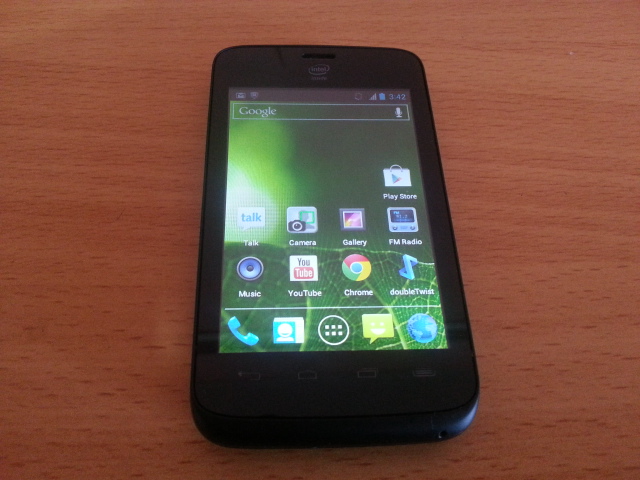

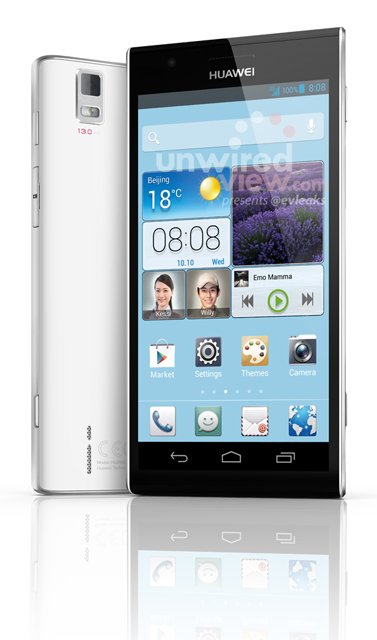


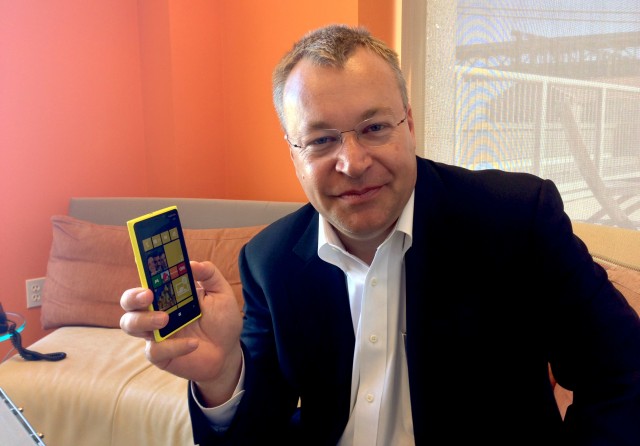
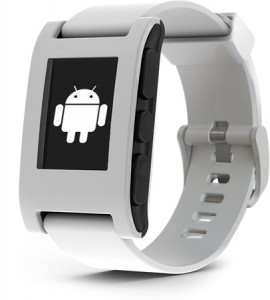

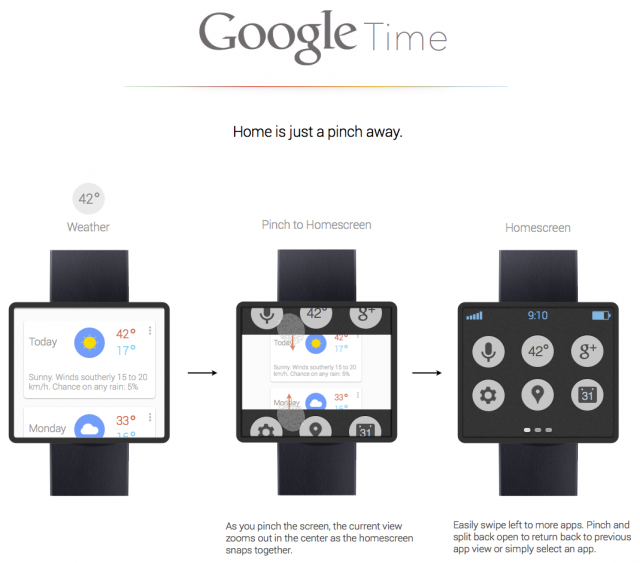






No comments:
Post a Comment